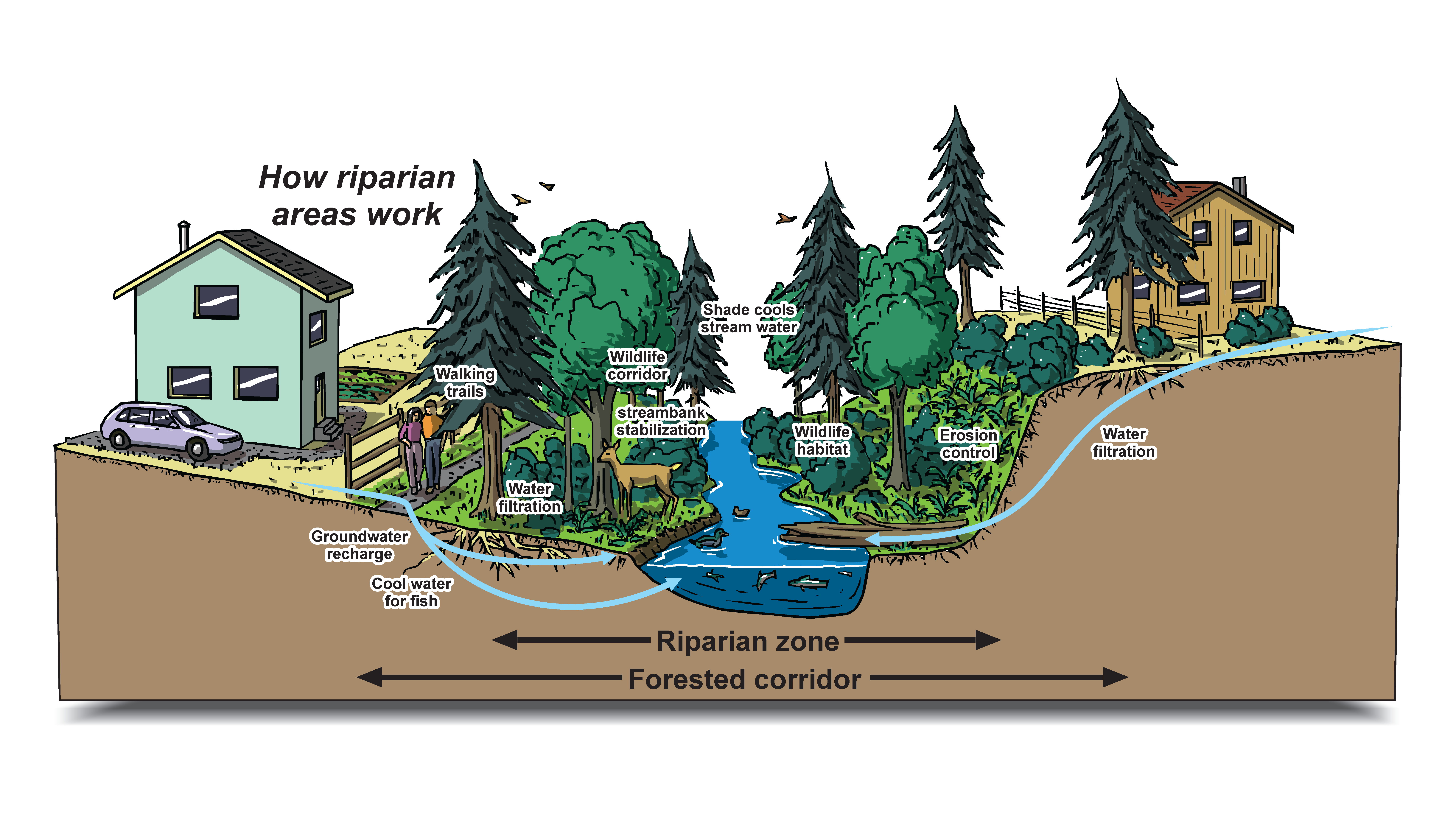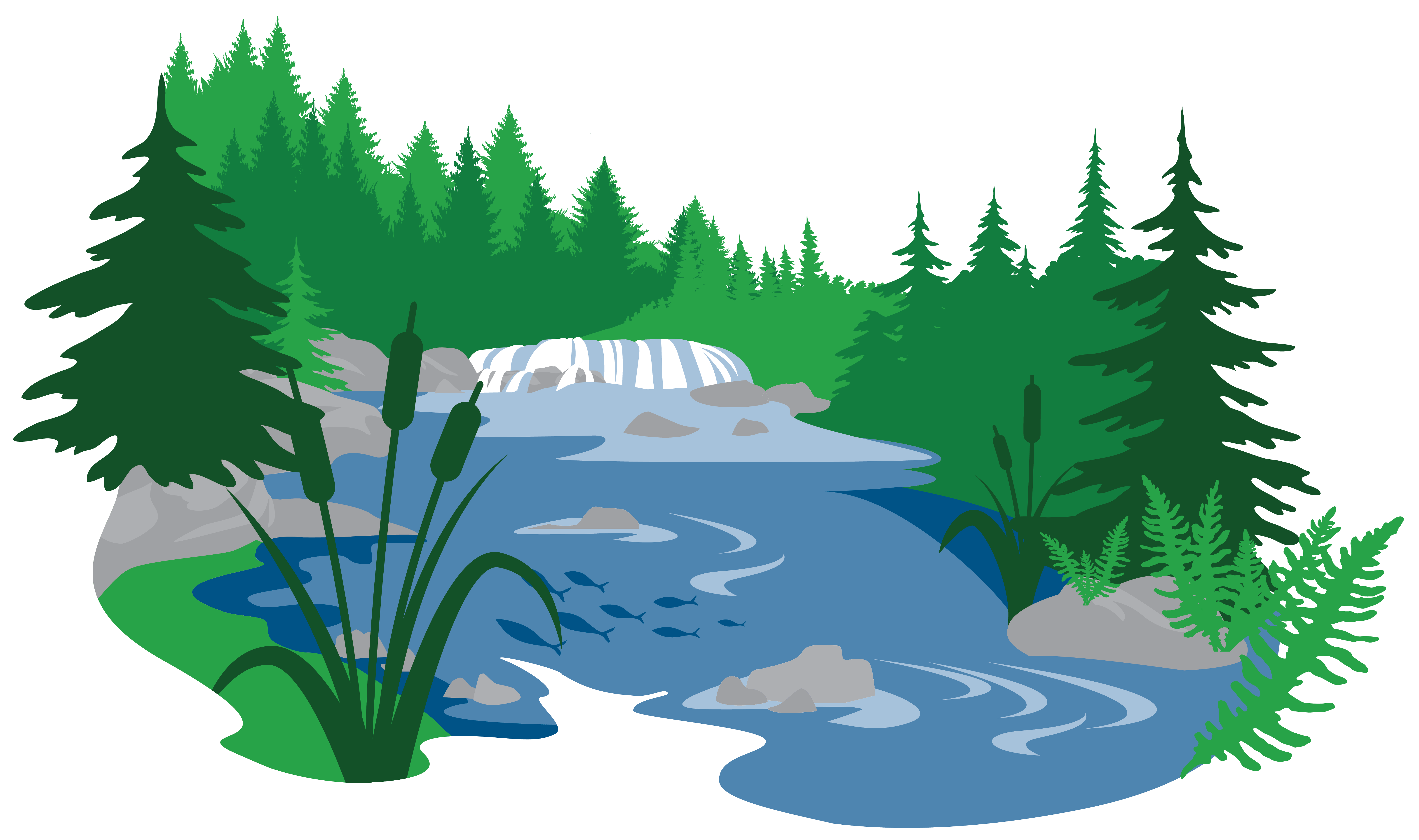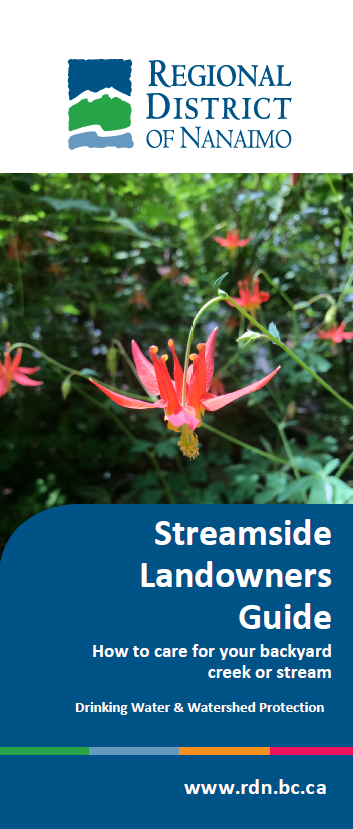Streamside Landowners Guide
If you live next to a creek, stream, or wetland, you are very lucky to enjoy a little bit of nature in your own backyard! The privilege of living alongside a stream comes with the responsibility of understanding how to manage your property to protect the health of our most precious natural resource.
Streams are natural commons that provide ecological services that people, communities, and wildlife jointly benefit from.
As a streamside landowner, you are uniquely positioned to positively impact the health of your stream and watershed for the long-term common benefit of communities, fish, and wildlife.
Get to know your backyard stream
Healthy streams are dynamic - they change with the seasons and contain features like pools, riffles, and runs that provide habitat for aquatic life.
The vegetated area along either side of a stream is called a riparian area. Riparian areas are important transition zones between the land and the water. The trees and plants within a riparian area shade the water, provide food and habitat for fish and wildlife, reduce streambank erosion, filter stormwater run-off and protect water quality.

Maintaining a healthy riparian area in your backyard
Within a stream is complex ecosystem that is habitat for insects, fish, and wildlife. The riparian area on either side of a stream, creek, or edges of wetland is vital for the health of freshwater ecosystems and watersheds.
Streams are complex ecosystems. Even small actions upstream can have a big impact further downstream.
Being a steward to your backyard or neighbourhood stream means working to maintain healthy and intact riparian areas to ensure a safe and reliable supply of freshwater for your family, community, and the environment.
How you manage your land directly impacts stream health, fish, and wildlife.
Here's how to steward your stream for your family, neighbours, community, and environment:
Protect and plant native vegetation
Native plants provide habitat for aquatic and terrestrial species, encourage beneficial insects, and protect watersheds from the spread of invasive species. In riparian areas, native vegetation helps to shade and reduce stream water temperature, filter stormwater and increase water quality, and protect streambanks from erosion.
Retain and protect existing native vegetation within riparian areas. Plant native species in areas with little or no vegetation.
Learn more about native vegetation in the Team WaterSmart Native Plants Handout below or contact your local nursery for more information on what plant species might work best for you and your stream!
Control and remove invasive species
Remove or control the spread of invasive species. Invasive species compete with native species and negatively impact stream health.
Always check the invasive status of a plant before purchasing and planting it on your property. Ask your local nursery how best to manage or contain exotic plant species.
Unsure if a plant is invasive or not? Visit the Invasive Species Council of BC to learn more through a complete list of resources, including a Field Guide to Noxious Weeds and Other Selected Invasive Plants of British Columbia and Grow Me Instead Guide.
Manage and filter rainwater
Hard surfaces, such as roads, sidewalks, patios and pathways, prevent rainwater from infiltrating into the soils below and recharging groundwater. Rainwater is instead shed across the land surface as stormwater run-off where it may pick up debris, pollutants, and pet waste as it runs directly into a watercourse where it may impact water quality and fish habitat.
Turn your yard into a 'sponge' - one that slows water flow and filters run-off by adding topsoil, compost, or mulch, or by creating raingardens or bioswales.
Learn more about raingardes in the Team WaterSmart Rain Gardens Handout below and other water smart garden practices at teamwatersmart.ca!
Compost and safely dispose of garden waste
Never dump yard or garden waste into a riparian area or stream. Dumped garden waste may smother native vegetation, impact stream water quality, and introduce invasive species to the ecosystem.
Unsure of where to dispose of garden waste? Contact the RDN Solid Waste & Recycling Department to find a facility near you.
Need to report illegal dumping? Contact the Ministry of Environment Report All Poachers and Polluters (RAPP) Hotline: 1-877-952-RAPP(7277)
Manage people, pets, and livestock
Keep a stream wild and healthy by refraining from building pathways, bridges, and structures within a riparian area and managing access for pets and livestock. Refrain from allowing waste to enter a stream.
Before you develop land near a waterway, be sure to check with your local & provincial authorities for rules and regulations. Learn more at Province of British Columbia Riparian Areas Protection Regulation (RAPR):

